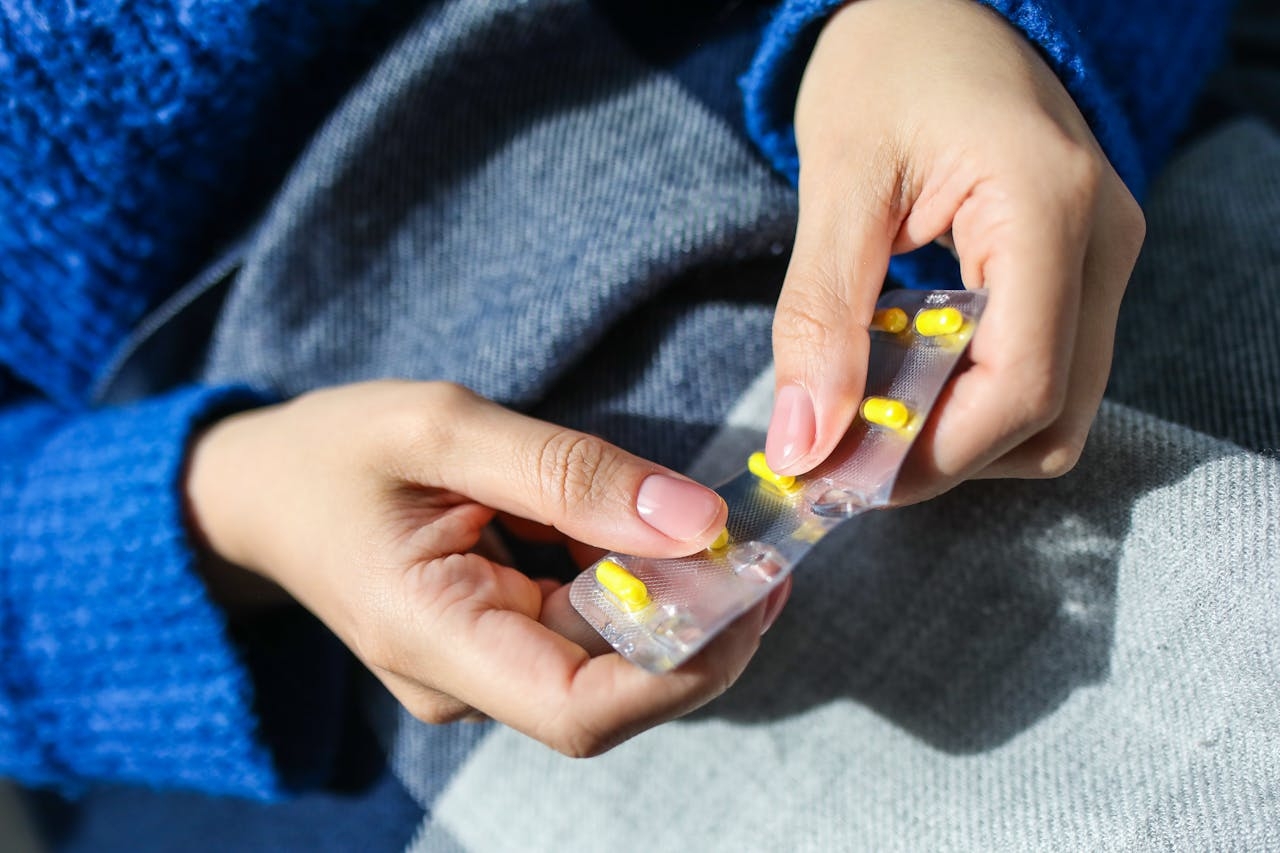
Suero fisiologico 0,9% vantive (clear-flex) solucion para perfusion

Como usar Suero fisiologico 0,9% vantive (clear-flex) solucion para perfusion
Introduction
PROSPECTO: INFORMATION FOR THE USER
Physiological solution 0.9% Vantive (Clear-Flex) for infusion
Active ingredient: sodium chloride
Read this prospect carefully before starting to use this medication, as it contains important information for you.
- Keep this prospect, as you may need to read it again.
- If you have any doubts, consult your doctor or nurse.
- If you experience adverse effects, consult your doctor or nurse, even if they are not listed in this prospect. See section 4.
This medication is referred to as “Physiological solution 0.9% Vantive (Clear-Flex) for infusion” but is referred to as Physiological solution 0.9% in the rest of this prospect.
1. What is Physiological Solution 0.9% and what is it used for
Physiological Solution 0.9% is a sodium chloride solution in water. Sodium chloride is a chemical substance (commonly called salt) found in the blood.
Physiological Solution 0.9% is used to treat:
- water loss from the body (dehydration),
- sodium loss from the body (sodium depletion),
Situations that may cause water and sodium chloride loss include:
- when unable to eat or drink due to illness or after surgery,
- excessive sweating caused by high fever,
- abundant skin loss, such as in severe burns.
Physiological Solution 0.9% may also be used to administer or dilute other medications for infusion.
2. What you need to know before they administer Physiological Saline Solution 0.9%
You should not be administered with 0.9% physiological serum if you have any of the following clinical situations:
- If your blood contains high levels of chloride above normal levels (hyperchloremia).
- If your blood contains high levels of sodium above normal levels (hypernatremia).
If another medication has been added to 0.9% physiological serum, you should consult your package insert to determine if you can or cannot receive the solution.
Warnings and precautions
Inform your doctor or nurse if you have or have had any of the following clinical situations:
- Any type of heart disease or heart function deterioration.
- Renal function deterioration.
- Blood acidification (acidosis).
- When the blood volume in the blood vessels is greater than it should be (hypervolemia).
- High blood pressure (hypertension).
- Accumulation of fluid under the skin, particularly under the ankles (peripheral edema).
- Fluid accumulation in the lungs (pulmonary edema).
- Liver disease (cirrhosis).
- High blood pressure during pregnancy (preeclampsia).
- Increased production of the aldosterone hormone (aldosteronism).
- Any other condition associated with sodium retention (when the body retains too much sodium), such as steroid treatment (see also Other medications and 0.9% physiological serum).
- If you have a condition that could cause high levels of vasopresin, a hormone that regulates the fluid in your body. You may have too much vasopresin in your body because, for example:
- you have had a sudden and severe illness,
- you have pain,
- you have had surgery,
- you have infections, burns, or brain injury,
- you have diseases related to your heart, liver, kidneys, or central nervous system,
- you are taking certain medications (see below Other medications and 0.9% physiological serum). This may increase the risk of having low sodium levels in the blood and may cause headaches, nausea, seizures, drowsiness, coma, brain inflammation, and death. Brain inflammation increases the risk of death and brain damage. People at higher risk of inflammation are:
- children
- women (particularly if they are of childbearing age)
- people who have problems with their cerebrospinal fluid levels, for example, due to meningitis, bleeding in the skull, or brain injury.
When you are receiving this solution, your doctor will be able to take blood and urine samples to control:
- The amount of fluid in your body
- Your vital signs
- The amount of chemicals such as sodium and potassium in your body (your plasma electrolytes)
This is especially important in children and premature babies, as they may retain too much sodium due to their immature renal function.
Your doctor will take into account if you are receiving parenteral nutrition (nutrition given by intravenous infusion). During prolonged treatment with 0.9% physiological serum, you may need to receive extra nutrition.
Other medications and 0.9% physiological serum
Inform your doctor or nurse if you are using, have used recently, or may need to use any other medication.
It is especially important to inform your doctor if you are taking:
- Corticosteroids (anti-inflammatory medications)
These medications may cause the body to accumulate sodium and water, leading to inflammation of the tissue due to fluid accumulation under the skin (edema) and high blood pressure (hypertension).
- Lithium (used to treat psychiatric diseases)
- Some medications act on the vasopresin hormone. These may include:
-diabetes medication (chlorpropamide)
cholesterol-lowering medication (clofibrate)
-some cancer medications (vincristine, ifosfamide, cyclophosphamide)
-selective serotonin reuptake inhibitors (used to treat depression)
-antipsychotics
-opioids for severe pain relief
-medications for pain and/or inflammation (also known as NSAIDs)
-medications that mimic or strengthen the effects of vasopresin, such as desmopressin (used to treat excessive thirst and urination), terlipressin (used to treat bleeding from the esophagus), and oxytocin (used to induce labor)
-antiepileptic medications (carbamazepine and oxcarbazepine)
-diuretics
Use of 0.9% physiological serum with food and drinks
Ask your doctor about what you can eat or drink.
Pregnancy, breastfeeding, and fertility
If you are pregnant or breastfeeding, think you may be pregnant, or plan to become pregnant, consult your doctor or nurse.
However, if another medication is added to the infusion solution during pregnancy or breastfeeding, you should:
- Consult your doctor.
- Read the package insert of the medication to be added.
Driving and operating machinery
Ask your doctor or nurse for advice before driving or operating machinery.
3. How they will administer 0.9% Physiological Serum
Physiological serum 0.9% will be administered by a doctor or nurse. Your doctor will decide how much you need and when it will be administered. This will depend on your age, weight, clinical status, the reason for your treatment, and whether infusion is used to administer or dilute another medication.
The amount you receive may also be influenced by other treatments you are receiving.
DO NOT receive Physiological serum 0.9% if there are particles floating in the solution or if the container is damaged in any way.
Physiological serum 0.9% will usually be administered through a plastic tube connected to a vein in your arm using a needle; however, your doctor may use another method to administer the medication.
Before and during the infusion, your doctor will monitor:
- the amount of fluid in your body
- the acidity of your blood and urine
- the amount of electrolytes in your body (particularly sodium, in patients with high levels of vasopressin, or those taking other medications that increase the effect of vasopressin).
Any unused solution should be discarded. You should NOT receive Physiological serum 0.9% from a bag that has been used partially.
If you receive more Physiological serum 0.9% than you should
If you are administered too much Physiological serum 0.9% (overdose), the following symptoms may occur:
- Nausea (discomfort).
- Vomiting.
- Diarrhea (loss of feces).
- Abdominal cramps.
- Thirst.
- Dry mouth.
- Dry eyes.
- Sweating.
- Fever.
- Fast heart rate (tachycardia).
- Increased blood pressure (hypertension).
- Renal failure.
- Accumulation of fluid in the lungs, making breathing difficult (pulmonary edema).
- Accumulation of fluid under the skin, particularly under the ankles (peripheral edema).
- Labored breathing (respiratory arrest).
- Headache.
- Dizziness.
- Restlessness.
- Irritability.
- Weakness.
- Muscle twitching and numbness.
- Seizures.
- Blood acidification (acidosis) leading to fatigue, confusion, lethargy, and increased respiratory rate.
- High sodium levels in your blood (hypernatremia), which may cause seizures, coma, brain swelling (cerebral edema), and death.
If you experience any of these symptoms, you should inform your doctor immediately. Your infusion will be stopped and you will be treated depending on the symptoms.
If a medication has been added to Physiological serum 0.9% before the excessive administration, the medication may also cause symptoms. You should read the list of possible symptoms in the medication's prospectus.
If you interrupt the infusion of Physiological serum 0.9%
Your doctor will decide if you should stop receiving this infusion
If you have any other questions about the use of this product, ask your doctor or nurse.
In case of overdose or accidental ingestion, consult the Toxicological Information Service. Phone 915.620.420
4. Possible Adverse Effects
Like all medicines, this medicine may cause side effects, although not everyone will experience them. The frequency of these side effects is unknown.
- Tremors,
- Decreased blood pressure (hypotension),
- Hives (urticaria),
- Skin rash,
- Itching (pruritus).
Low sodium levels in the blood that may occur during hospitalization (nosocomial hyponatremia) and related neurological disorder (acute hyponatremic encephalopathy).
- Hyponatremia may cause irreversible brain damage and death due to cerebral edema/inflammation (see also section 2 “Warnings and precautions”).
The side effects that may occur due to the administration technique include:
- Infection at the injection site,
- Local pain or reaction (redness or swelling at the administration site),
- Irritation and inflammation of the vein through which the solution is infused (phlebitis). This may cause redness, pain, or burning and swelling along the vein through which the solution has been infused,
- Formation of a blood clot (thrombosis) in the perfusion site, causing pain, swelling, or redness in the area of the clot,
- Leakage of the perfusion solution into the surrounding tissues (extravasation), which may damage the tissues and cause scarring,
- Excess fluid in the blood vessels (hypervolemia),
- Itching at the perfusion site (urticaria),
- Fever (pyrexia),
- Chills.
Other side effects reported with similar products (other sodium-containing solutions) include:
- Higher-than-normal sodium levels in the blood (hypernatremia),
- Lower-than-normal sodium levels in the blood (hyponatremia),
- Metabolic acidosis related to higher-than-normal chloride levels in the blood (hyperchloremic metabolic acidosis).
Reporting of side effects
If you experience any type of side effect, consult your doctor, pharmacist, or nurse, even if it is a possible side effect that does not appear in this prospectus. You can also report them directly through the Spanish System for Pharmacovigilance of Medicines for Human Use:www.notificaRAM.es.
By reporting side effects, you can contribute to providing more information on the safety of this medicine.
If any of these occur, the infusion should be stopped.
5. Conservation of Physiological Serum 0.9%
Keep this medication out of the sight and reach of children.
Do not store at a temperature above 25°C.
DO NOT use this medication after the expiration date that appears on the bag after CAD. The expiration date is the last day of the month indicated.
Do not receive this medication if there are particles floating in the solution or if the container is damaged in any way.
6. Contents of the packaging and additional information
Composition of Physiological Solution 0.9%
The active ingredient is sodium chloride: 9 g per liter.
The only excipient is water for injectable preparations.
Aspect of the product and contents of the package
Physiological Solution 0.9% is a transparent, particle-free solution. It is presented in plastic bags made of polypropylene/polyamide/polyethylene (Clear-Flex). Each bag is packaged in a protective plastic overbag.
The bag sizes are:
- 50 ml
- 100ml
- 250 ml
- 500 ml
- 1000 ml
- 2000 ml
The bags are supplied in boxes, each containing the following quantities:
- 50 bags of 50 ml
- 50 bags of 100 ml
- 36 bags of 250 ml
- 20 bags of 500 ml
- 10 bags of 1000 ml
- 6 bags of 2000 ml
Only some sizes of packaging may be commercially available.
Holder of the marketing authorization and responsible for manufacturing
Holder of the marketing authorization
Vantive Health, S.L.
Industrial Sector 14
C/Pouet de Camilo 2
46394 Ribarroja del Turia (Valencia) Spain
Responsible for manufacturing:
Bieffe Medital S.p.A.
Via Nuova Provinciale
I-23034 Grosotto (SO)
Italy
Last review date of this leaflet: November 2018
Detailed and updated information on this medication is available on the website of the Spanish Agency for Medicines and Medical Devices (AEMPS)http://www.aemps.gob.es/
-------------------------------------------------------------------------------------------------------------------
This information is intended solely for healthcare professionals
Handling and preparation
Use only if the solution is transparent, particle-free, and the packaging is intact. Administer immediately after connecting the infusion equipment.
Do not remove the bag from its protective overbag until it is ready for use.
The inner bag maintains the sterility of the solution.
Do not connect plastic containers in series. This type of use may produce gas embolism due to residual air carried from the primary container before the secondary container is completed.
The pressurization of intravenous solutions in flexible plastic containers to increase flow rates may lead to gas embolism if the residual air in the container is not completely evacuated before administration.
The solution must be administered with sterile equipment using an aseptic technique. The equipment must be primed with the solution to prevent air from entering the system.
When adding medications, verify isotonicity before parenteral administration. A complete and careful aseptic mixing of any medication is required. Solutions containing medications must be used immediately and not stored.
The addition of other medications or the use of an incorrect administration technique may cause the appearance of fever reactions due to the possible introduction of pyrogens. In case of an adverse reaction, the infusion must be stopped immediately.
Dispose of after single use.
Dispose of any remaining portion.
Do not reconnect partially used bags.
- To open
- Remove the bag from the protective overbag immediately before use.
- Check for small leaks by compressing the inner bag. If leaks are detected, discard the solution, as it may not be sterile.
- Check the transparency of the solution and the absence of foreign particles. Discard the solution if it is not transparent or contains foreign particles.
- Preparation for administration
Use sterile material for preparation and administration.
- Hang the container by the hanger.
- - Remove the plastic protector from the outlet at the bottom of the container.
- Hold one hand on the small handle of the outlet tube.
- Hold the other hand on the large handle of the closure cap and turn.
- The cap will come off.
- Use an aseptic technique to prepare the infusion.
- Connect the administration equipment. Consult the instructions accompanying the equipment for connection, priming, and administration of the solution.
- Techniques for injecting added medication
Warning: Added medications may be incompatible. (See the section 5 "Incompatibilities of added medications" below)
To add medication before administration
- Disinfect the injection site.
- Using a syringe with a 19 (1.10 mm) to 22 (0.70 mm) gauge needle, puncture the resellable injection site and inject.
- Mix the medication and solution carefully. For high-density medications, such as potassium chloride, gently move the tubes while in the vertical position and mix.
Caution: Do not store bags with added medication.
To add medication during administration
- Close the clamp on the equipment.
- Disinfect the injection site.
- Using a syringe with a 19 (1.10 mm) to 22 (0.70 mm) gauge needle, puncture the resellable injection site and inject.
- Remove the container from the intravenous support and/or turn it to a vertical position.
- Empty both tubes by gently tapping them while the container is in the vertical position.
- Mix the solution and medication carefully.
- Replace the container in the use position, reopen the clamp, and continue administration.
- Expiry in use (added medications)
Before use, the physical and chemical stability of any additional medication to the pH of Physiological Solution 0.9% in the Clear-Flex bag must be established.
From a microbiological point of view, the diluted product must be used immediately unless the addition of medications has been carried out in validated and aseptic conditions. If not used immediately, the conditions and storage times used before use are the responsibility of the user.
- Incompatibilities of added medications
As with all parenteral solutions, the incompatibility of added medications to the solution in the Clear-Flex bag must be verified before addition.
In the absence of compatibility studies, this solution should not be mixed with other medications.
It is the responsibility of the doctor to judge the incompatibility of the added medication to Physiological Solution 0.9% by examining any eventual change in color and/or precipitation, appearance of insoluble complexes or crystals. The medication's prospectus should be consulted.
Before adding a medication, verify that it is soluble and stable in water at the pH of Physiological Solution 0.9%.
Medications known to be incompatible should not be used.
- País de registo
- Substância ativa
- Requer receita médicaSim
- Fabricante
- Esta informação é apenas para referência e não constitui aconselhamento médico. Consulte sempre um médico antes de tomar qualquer medicamento. A Oladoctor não se responsabiliza por decisões médicas baseadas neste conteúdo.
Consulte um médico online sobre o Suero fisiologico 0,9% vantive (clear-flex) solucion para perfusion
Consulte um médico online
Tem perguntas sobre este medicamento ou sintomas? Obtenha orientação de um médico qualificado, de forma prática e segura.















